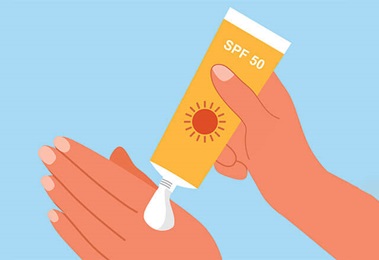Yeast Infection
What is a yeast infection?
Yeast is a fungus normally found on your skin. It’s also found in your digestive system. If you’re a woman, you also have yeast in your vaginal area. When too much yeast grows on your skin or other areas, it can cause an infection. This infection is also called candidiasis.What causes a yeast infection?
A yeast infection can happen if your skin gets damaged. Yeast can also “overgrow” in warm or humid conditions. An infection can also happen if you have a weak immune system. Taking antibiotics can also cause an overgrowth of yeast. That’s because antibiotics kill the healthy bacteria in your body that normally keep the yeast in balance.What are the risk factors for yeast infection?
Anyone can get a yeast infection. Those at higher risk for it include:
- Infants
- People who wear dentures
- People taking antibiotics
- People getting cancer treatment
- People with other health conditions, such as HIV or diabetes
What are the symptoms of a yeast infection?
The symptoms of a yeast infection depend on where it is located in the body. The chart below shows the most common symptoms of a yeast infection. But yours may be slightly different.
Location | Symptoms |
Skin folds or navel |
|
Vagina |
|
Penis |
|
Mouth (thrush) |
|
Corners of the mouth (angular cheilitis) |
|
Nail beds |
|
The symptoms of a yeast infection may look like other skin conditions. Always see your healthcare provider for a diagnosis.
How is yeast infection diagnosed?
Your healthcare provider will ask about your symptoms and medical history. He or she will also give you a physical exam. He or she may scrape off a bit of skin or remove part of a nail and examine it to confirm the diagnosis.How is yeast infection treated?
Your healthcare provider will consider your age, overall health, how widespread the infection is and other factors to determine your treatment.
Yeast infections can be easily treated with ointments or other anti-yeast (antifungal) creams.
- Yeast infections of the vagina or penis can be treated with creams or medicated suppositories. Sometimes an oral anti-yeast medicine is used.
- Yeast infection in the mouth (thrush) may be treated with a medicated mouthwash. Or it may be treated with lozenges that dissolve in the mouth.
- If you have a severe infection and have a weak immune system, you may need to take an oral anti-yeast medicine.
- Esophageal yeast infections are usually treated with oral or intravenous anti-yeast medicines.
- Yeast infections of the nails are treated with an oral anti-yeast medicine.
- Yeast infections in the skin folds can be treated with anti-yeast powders.
Can a yeast infection be prevented?
You can prevent some yeast infections by doing these things:
- Use good oral hygiene to help prevent yeast infection in your mouth (thrush). This includes brushing and flossing your teeth every day and using mouthwash as needed.
- Wear cotton underwear to help to prevent a vaginal or genital yeast infection. If you are a woman and get vaginal yeast infections often, you may want to take probiotics.
- Keep areas where skin rubs up against skin dry and try to reduce friction.
When should I call my healthcare provider?
If you get symptoms of infection, such as warm, reddened skin or drainage, tell your healthcare provider. A secondary bacterial infection can happen, so monitor for spreading redness, or swelling, or pain.Key points about yeast infection
- Yeast infection is caused by yeast on the skin or mucous membranes.
- The symptoms of a yeast infection depend on where it happens on your body. Common symptoms are a rash, white discharge, or itching.
- Yeast infections are treated with medicated ointments or other anti-yeast (antifungal) preparations.
Next steps
Tips to help you get the most from a visit to your healthcare provider:- Know the reason for your visit and what you want to happen.
- Before your visit, write down questions you want answered.
- Bring someone with you to help you ask questions and remember what your provider tells you.
- At the visit, write down the name of a new diagnosis, and any new medicines, treatments, or tests. Also write down any new instructions your provider gives you.
- Know why a new medicine or treatment is prescribed, and how it will help you. Also know what the side effects are.
- Ask if your condition can be treated in other ways.
- Know why a test or procedure is recommended and what the results could mean.
- Know what to expect if you do not take the medicine or have the test or procedure.
- If you have a follow-up appointment, write down the date, time, and purpose for that visit.
- Know how you can contact your provider if you have questions.





